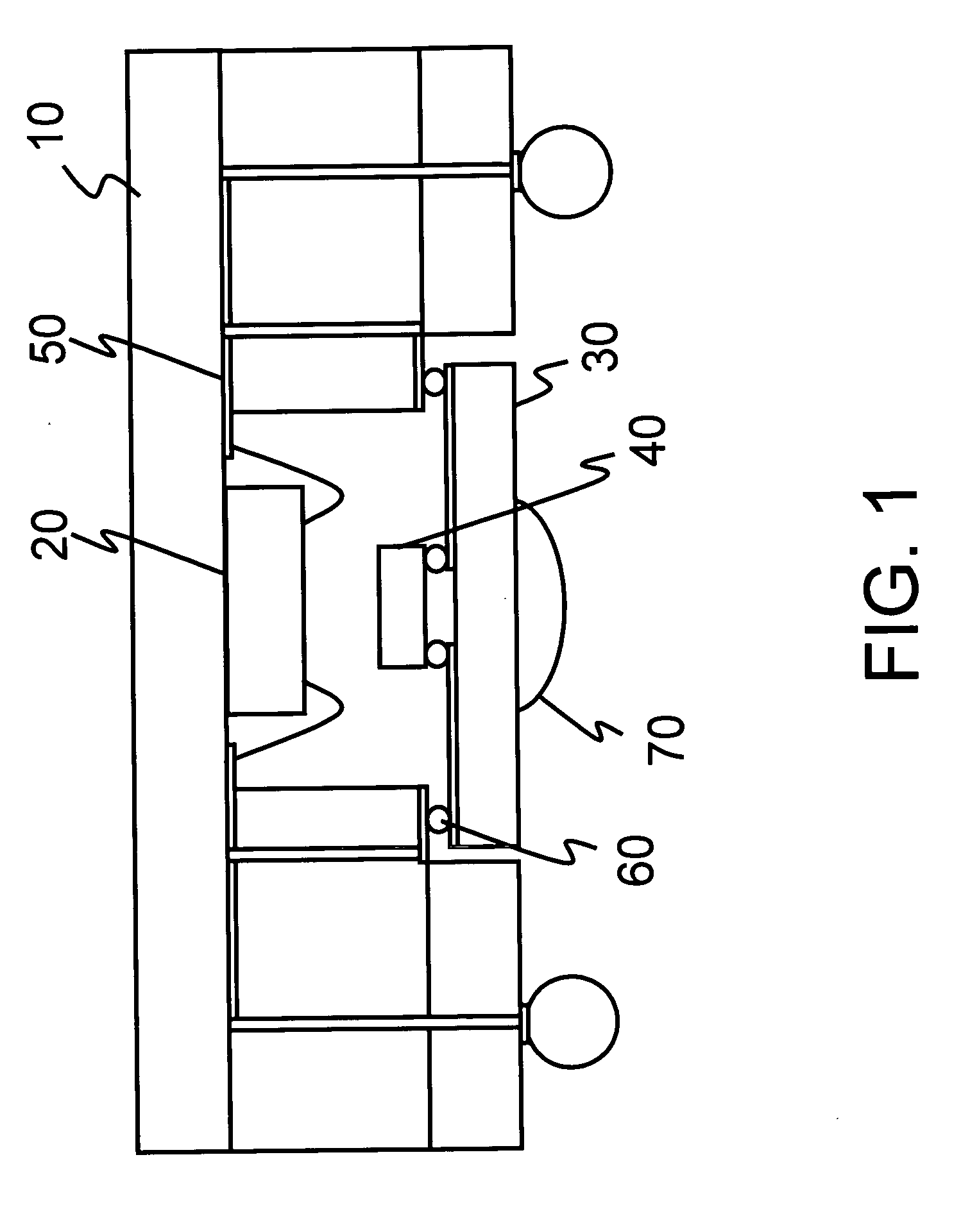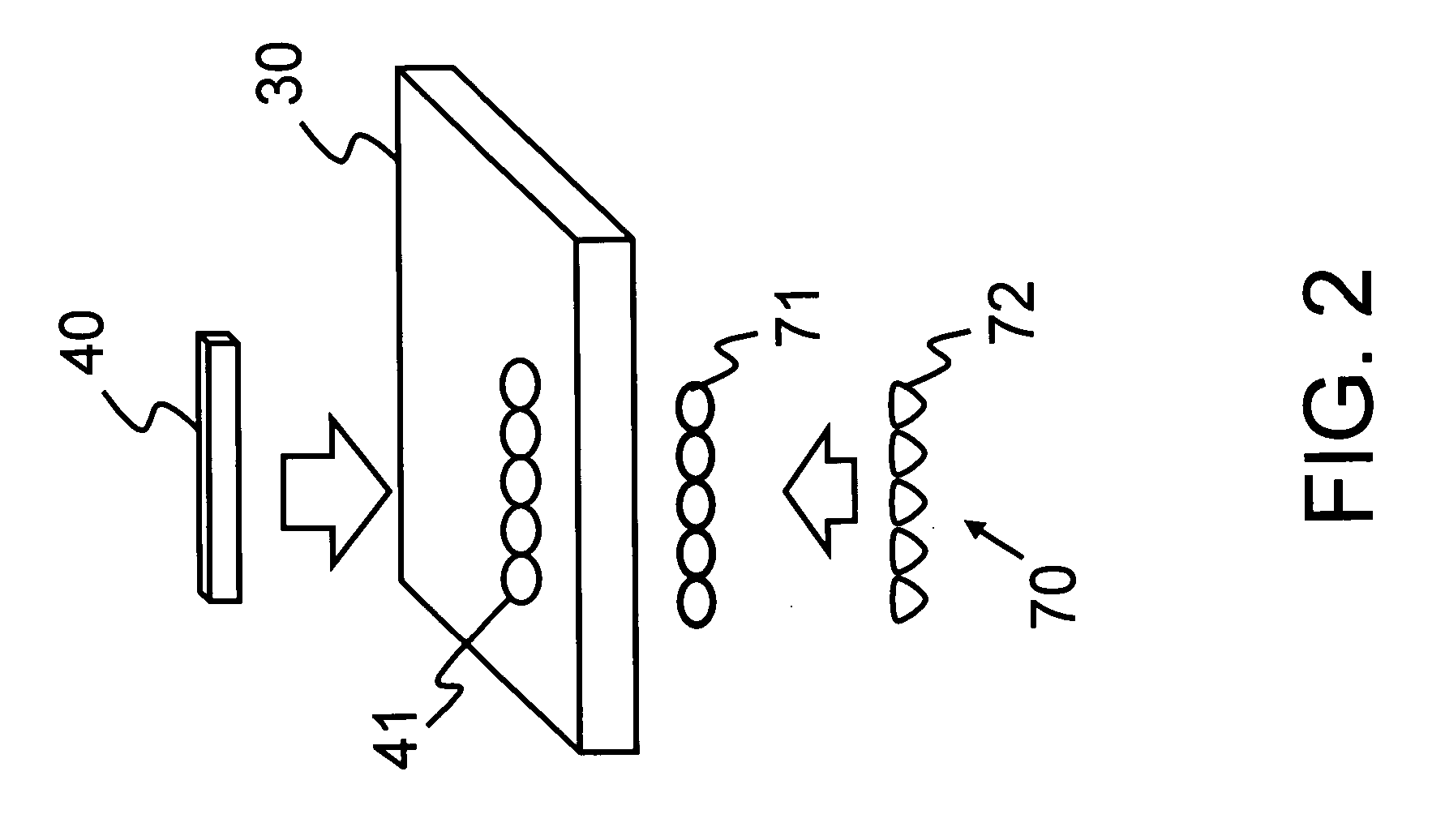Array optical sub-assembly
a technology of optical sub-assembly and array, applied in the direction of optics, optical elements, instruments, etc., can solve the problems of reducing the overall performance of the optical sub-assembly, the inability to achieve the desired optical coupling efficiency and reliability, and the importance of optical data communication between the two, so as to reduce the difficulty of fabrication and improve the overall performance
- Summary
- Abstract
- Description
- Claims
- Application Information
AI Technical Summary
Benefits of technology
Problems solved by technology
Method used
Image
Examples
Embodiment Construction
[0012] Refer to FIG. 1 for the structure of an embodiment of the array optical sub-assembly of the invention. It includes a base seat 10, an integrated circuit (IC) 20, a transparent substrate 30 and a photoelectric element 40. The base seat 10 has a holding surface for holding the IC 20. The IC 20 is mounted onto the holding surface, and has one or more sets. The transparent substrate 30 is coupled with the photoelectric element 40 and covers the holding surface of the base seat 10 to form a sealed or even airtight space with the base seat 10 to house the photoelectric element 40 and the IC 20. The photoelectric element 40 and the IC 20 are spaced from each other, so heat generated by the IC 20 does not directly transfer to the photoelectric element 40 and cooling problems may be mitigated.
[0013] The base seat 10 is made from ceramic material such as aluminum nitride (AIN) and aluminum oxide (Al2O3), or metal, plastics or polymer materials. The base seat 10 has a plurality of meta...
PUM
 Login to View More
Login to View More Abstract
Description
Claims
Application Information
 Login to View More
Login to View More - R&D
- Intellectual Property
- Life Sciences
- Materials
- Tech Scout
- Unparalleled Data Quality
- Higher Quality Content
- 60% Fewer Hallucinations
Browse by: Latest US Patents, China's latest patents, Technical Efficacy Thesaurus, Application Domain, Technology Topic, Popular Technical Reports.
© 2025 PatSnap. All rights reserved.Legal|Privacy policy|Modern Slavery Act Transparency Statement|Sitemap|About US| Contact US: help@patsnap.com



